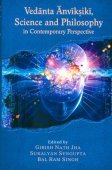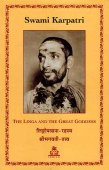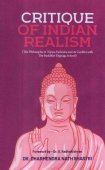Materialism, Materialist: 2 definitions
Introduction:
Materialism means something in Hinduism, Sanskrit, the history of ancient India. If you want to know the exact meaning, history, etymology or English translation of this term then check out the descriptions on this page. Add your comment or reference to a book if you want to contribute to this summary article.
In Hinduism
Yoga (school of philosophy)
Source: ORA: Amanaska (king of all yogas): A Critical Edition and Annotated Translation by Jason BirchThe Materialists are denoted by the Sanskrit term Cārvāka, according to the Dattātreyayogaśāstra 41-42.—Accordingly, “Whether a Brahmin, an ascetic, a Buddhist, a Jain, a Skull-Bearer or a materialist (Cārvāka), the wise man who is endowed with faith and constantly devoted to the practice of [haṭha] yoga will attain complete success”.

Yoga is originally considered a branch of Hindu philosophy (astika), but both ancient and modern Yoga combine the physical, mental and spiritual. Yoga teaches various physical techniques also known as āsanas (postures), used for various purposes (eg., meditation, contemplation, relaxation).
India history and geography
Source: archive.org: Trisastisalakapurusacaritra (history)Materialism was know as the Cārvāka system in ancient India, as mentioned in chapter 1.1 [ādīśvara-caritra] of Hemacandra’s 11th century Triṣaṣṭiśalākāpuruṣacaritra: an ancient Sanskrit epic poem narrating the history and legends of sixty-three illustrious persons in Jainism.
Accordingly, as Sambhinnamati exposed materialism to king Mahābala (i.e., previous incarnation of Ṛṣabha):—
“If people are born and die according to karma, as a result of what karma do bubbles appear and disappear? Therefore, so long as consciousness exists, it acts as it desires. Of consciousness that has perished, there is no further birth. ‘Whoever dies is born again,’ that is mere talk with entirely inconclusive argument. Therefore, our Master should unhesitatingly enjoy himself with young women charming with beauty of form on a couch like śirīṣa petals. He should eat at will nectar-like food and drink. He is an enemy who hinders. Day and night, remain anointed with camphor, aloe, musk, sandal, etc., as if made of fragrance alone. O King, constantly look at whatever abounds in gardens, vehicles, people, picture galleries, etc., for the pleasure of the,eyes. Day and night, O Master, have nectar for your ears with sounds of songs echoing with flutes, lutes, and drums. So long as one lives, let him live happily with pleasures of the senses. He should not trouble himself by religious actions. Where is the fruit of dharma and non-dharma?”

The history of India traces the identification of countries, villages, towns and other regions of India, as well as mythology, zoology, royal dynasties, rulers, tribes, local festivities and traditions and regional languages. Ancient India enjoyed religious freedom and encourages the path of Dharma, a concept common to Buddhism, Hinduism, and Jainism.
See also (Relevant definitions)
Full-text (+46): Lokayata, Dehatmavadin, Vishayayin, Dehatmavada, Carvaka, Lokayatana, Laukayatika, Vishayin, Barhaspatya, Bhautika, Dehatmavadi, Lokayatika, Dehatma, Anatman, Dehatm, Anatm, Bhautik, Bhautavadi, Dvandvatmaka-bhautikavada, Anatmavadi.
Relevant text
Search found 109 books and stories containing Materialism, Materialist; (plurals include: Materialisms, Materialists). You can also click to the full overview containing English textual excerpts. Below are direct links for the most relevant articles:
Indian Materialism < [Jan-Feb 1940]
Books and Authors < [April – June, 1982]
Materialism and the Bhagawadgita < [Oct-Nov-Dec 1940]
Chaitanya Bhagavata (by Bhumipati Dāsa)
Verse 2.7.22 < [Chapter 7 - The Meeting of Gadādhara and Puṇḍarīka]
Verse 2.7.100-1101 < [Chapter 7 - The Meeting of Gadādhara and Puṇḍarīka]
Verse 2.7.42 < [Chapter 7 - The Meeting of Gadādhara and Puṇḍarīka]
Jainism and Patanjali Yoga (Comparative Study) (by Deepak bagadia)
Part 8.9 - Carvaka Philosophy < [Chapter 1 - Introduction]
Part 11 - Biographies (Patanjali v/s Mahavira) < [Chapter 4 - A Comparative Study]
Part 1 - Introduction to Indian Philosophy < [Chapter 1 - Introduction]
Consciousness in Gaudapada’s Mandukya-karika (by V. Sujata Raju)
Cārvāka View of Consciousness < [Chapter 1]
Sāṅkhya View of Consciousness < [Chapter 1]
Various views of nature of reality < [Chapter 4: Study of Māṇḍūkya Kārikā: Vaitathya Prakaraṇa]
Yoga Vasistha [English], Volume 1-4 (by Vihari-Lala Mitra)
Chapter XII - Different aspects of yoga < [The yoga philosophy]
Chapter XXXVII - A lecture on the visibles and visible world < [Book VII - Nirvana prakarana part 2 (nirvana prakarana)]
Chapter VII - Nature of the soul < [The yoga philosophy]
Yoga-sutras (Vedanta Commentaries)
Sūtras 5-6 < [Part II - Yoga and its Practice]
Sūtra 16 < [Part III - Powers]
Sūtras 50-51 < [Part I - Yoga and its Aims]
Related products



